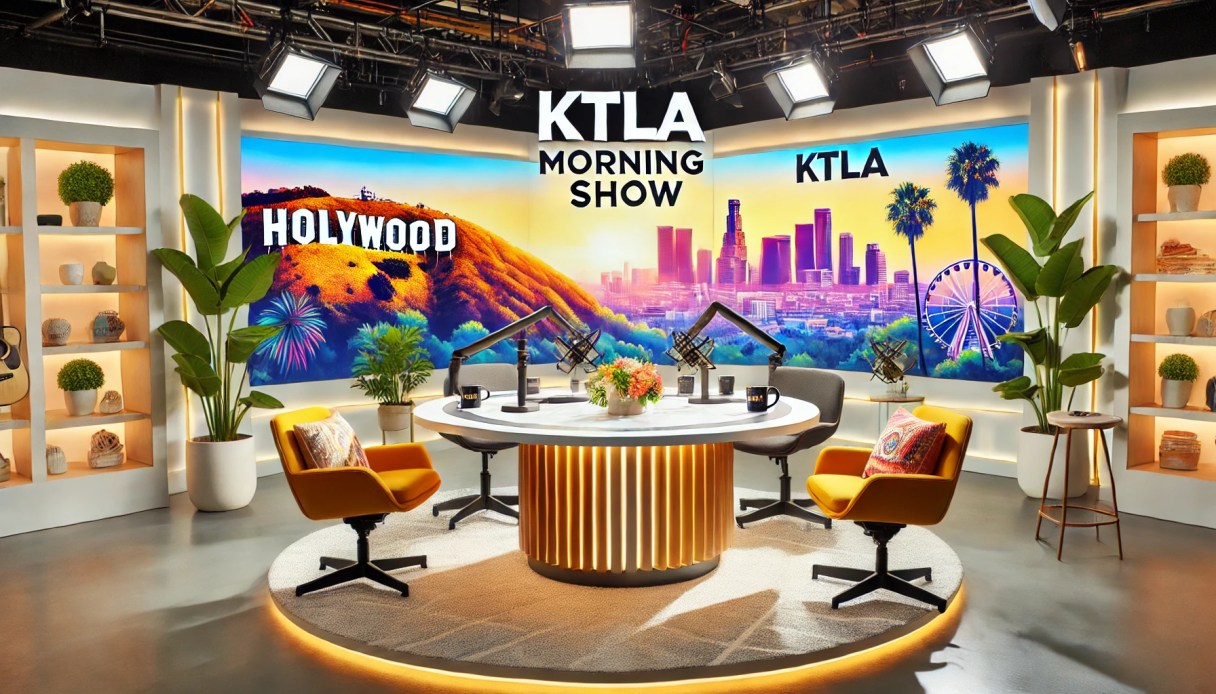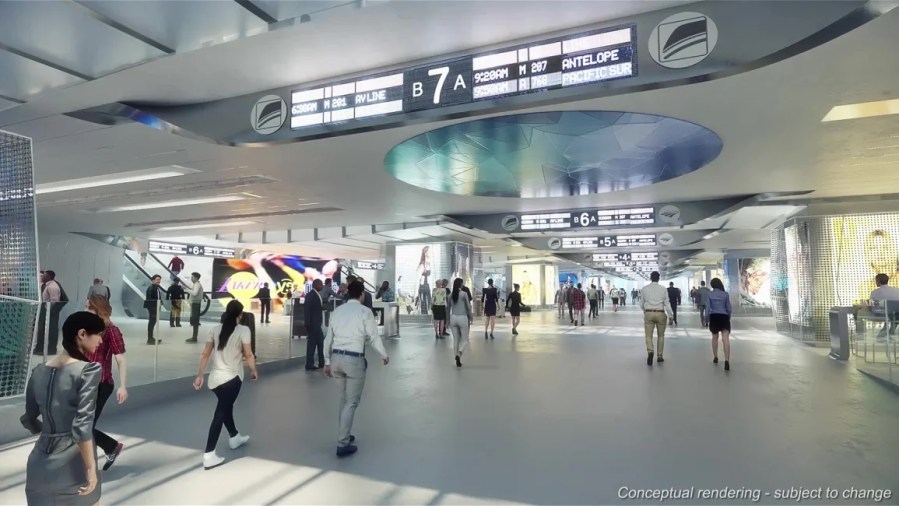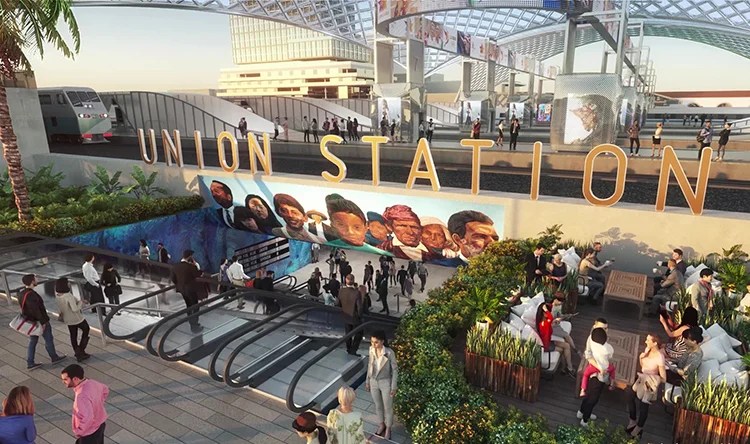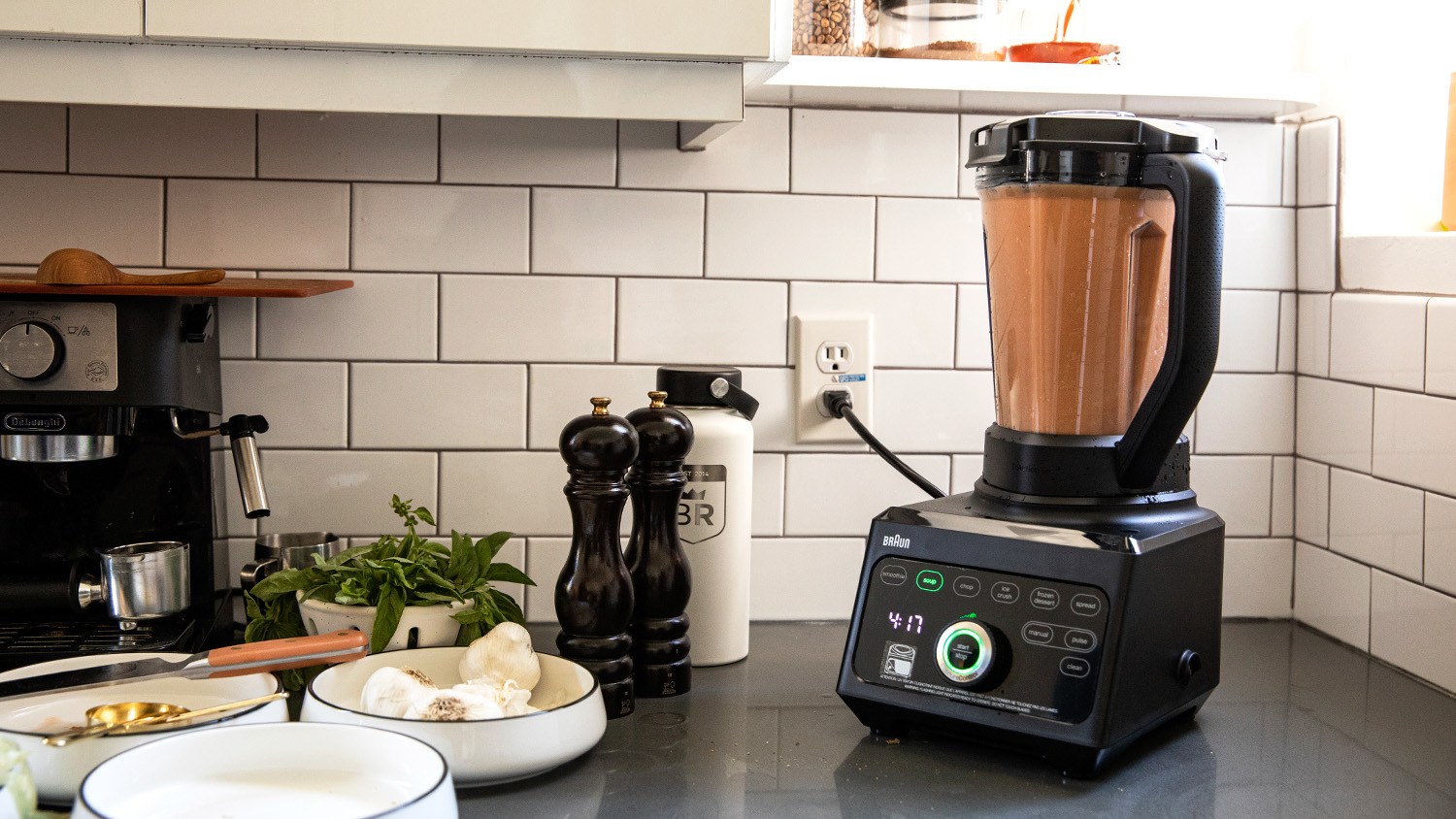Plans to revamp and revitalize Los Angeles’ historic transit hub include the construction of a large bridge over one of the region’s busiest freeways.
Confirmed by environmental documents released by LA Metro last week, a 700-foot-long bridge would be constructed over Highway 101 for incoming and outgoing trains into Los Angeles Union Station.
It’s part of a greater plan to reimagine and modernize Union Station for eventual increased capacity and new service — a project known as Link Union Station.
Right now, passenger trains like Amtrak and Metrolink have to enter into Union Station from the north and stop at a “stub-end” platform, essentially meaning they reach a dead end. When they depart for the next stop, assuming they are continuing their journey and L.A. is not the final destination, the trains have to leave from the same way they came in north of Union Station.
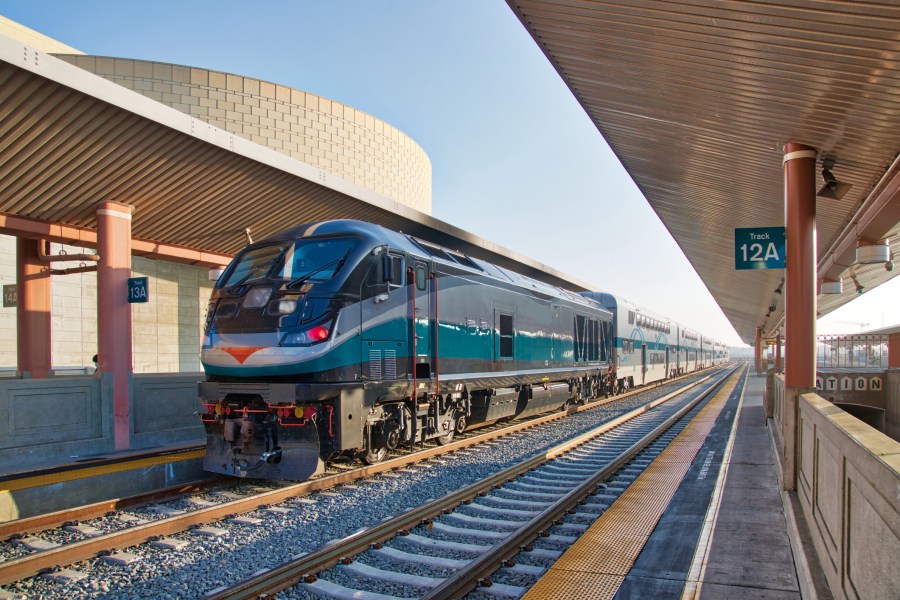
That sometimes forces trains to pull out from the end of the platform and resume travel with the train pointed in the opposite direction from the way it arrived — the front of the train is now the back of the train, and vice versa.
If you’ve ever ridden the Amtrak Pacific Surfliner from anywhere north of Los Angeles to San Diego, for instance, you’ve likely experienced the almost-vertigo-inducing change of direction.
Plans to upgrade Union Station will extend those platforms from their previous dead ends and connect them with the new bridge south of the station, creating eight new “run-through” tracks. That will enable trains to enter Union Station from either the north or the south, so trains can stop at a platform, allow riders to get on or off, and then continue moving forward in the same direction.
Metro says the new bridge will improve “operational efficiency, capacity, flexibility, and connectivity for trains using LAUS, which would provide a wide range of benefits to the community and transit users.”
The conversion would not only remove the need for trains to turn around at Union Station, but it will reduce the time a train is stationary there and allow for more trains to pass through.
That’s particularly important for California’s transportation future, as Union Station, originally built in 1939, is set to become one of the primary transit centers for the California High-Speed Rail when that service eventually reaches downtown Los Angeles.
The California High-Speed Rail Authority is a co-sponsor of the project and is helping to fund the improvements.
High-speed trains, in addition to Metrolink and Amtrak, would go in and out of Union Station using the new bridge over the 101 Freeway, known as the US-101 Viaduct.

The environmental documents published by LA Metro describe the bridge as “approximately 205 feet wide, 700 feet long, with a deck elevation that varies between 307 feet and 314 above mean sea level.” The height of the bridge would vary between 25 and 35 feet over the roadway, depending on the specific location.
“The current design can accommodate eight tracks at the south end of the Los Angeles Union Station where it connects to the bridge structure and converges into two tracks where it lands on the west bank,” a spokesperson for LA Metro told KTLA. “At the point over the US-101, the bridge structure can accommodate six tracks.”
The first phase of the project, expected to be in service during the summer of 2031, would provide two run-through tracks for Metrolink and Amtrak. The second phase would include a “full build-out” to accommodate California High-Speed Rail with the eight tracks converging into two tracks as it crosses the 101 Freeway.
The Link Union Station project has been in the works for nearly a decade and an environmental review under the California Environmental Quality Act was completed in 2019. Now it’s undergoing review at the federal level, with hopes of securing some additional funding from Uncle Sam.
In addition to the new run-through tracks and high-speed rail support, other improvements under Link US include new tracks to connect to an elevated rail yard, improvements to the concourse, and new communication, signaling and safety systems.
“Link Union Station Project is proposed to accommodate the increased regional/intercity rail capacity through 2040, improve transit connectivity, enable one-seat rides on the regional/intercity rail systems across Southern California and accommodate the planned high-speed rail system at LAUS,” the Metro spokesperson added.
As part of the publication of these environmental documents, public comment is now open through Aug. 9. A public hearing and open house regarding the project will take place on July 9 at LA Metro headquarters.
Additional information about Link US can be found here.
